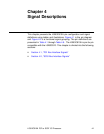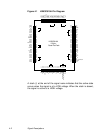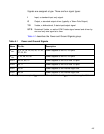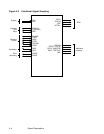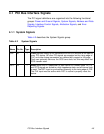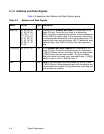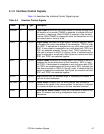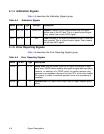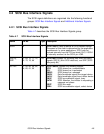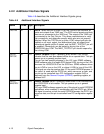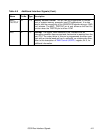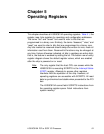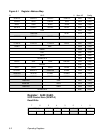
SCSI Bus Interface Signals 4-9
4.2 SCSI Bus Interface Signals
The SCSI signal definitions are organized into the following functional
groups: SCSI Bus Interface Signals and Additional Interface Signals.
4.2.1 SCSI Bus Interface Signals
Table 4.7 describes the SCSI Bus Interface Signals group.
Table 4.7 SCSI Bus Interface Signals
Name Pin No. Type Description
SCLK 51 I SCSI Clock is used to derive all SCSI-related timings.
The speed of this clock is determined by the application
requirements. In some applications, SCLK may be
sourced internally from the PCI bus clock (CLK). If SCLK
is internally sourced, tie the SCLK pin LOW.
SD[7:0],
SDP
67, 69, 70, 71, 72,
74, 75, 76, 66
I/O SCSI Data includes the following data lines and parity
signals: SD[7:0] (8-bit SCSI data bus), and SDP (SCSI
data parity bit).
SCTRL/ 57, 55, 60, 56, 62,
64, 65, 61, 59
I/O SCSI Control includes the following signals:
SCD/ SCSI phase line, command/data
SIO/ SCSI phase line, input/output
SMSG/ SCSI phase line, message
SREQ/ Data handshake signal from target device
SACK/ Data handshake signal from initiator device
SBSY/ SCSI bus arbitration signal, busy
SATN/ SCSI Attention, the initiator is requesting a
message out phase
SRST/ SCSI bus reset
SSEL/ SCSI bus arbitration signal, select device



